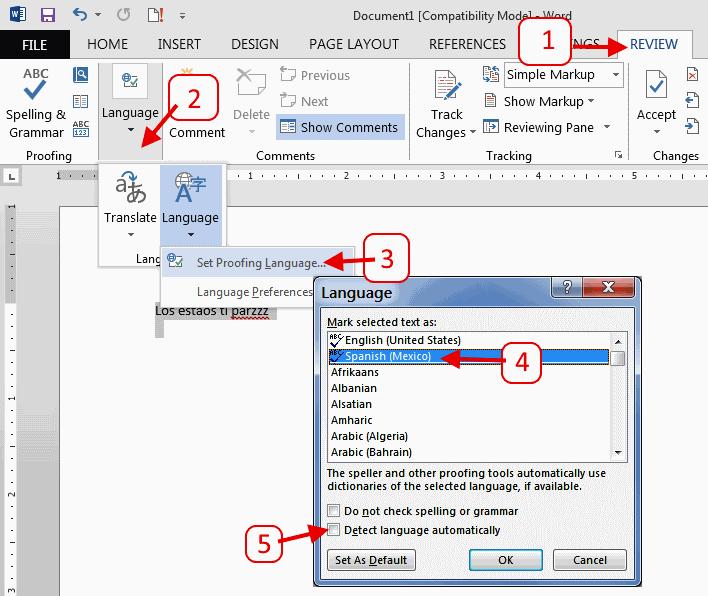


(The methods include Undo, CTRL+Z Default Formatting, CTRL+M and disabling URL recognition in AutoCorrect.) Now there is a more obvious method: the context menu (also know as a right-click menu) features the new commands Open Hyperlink, Edit Hyperlink, Copy Hyperlink Location, and Remove Hyperlink.
Open office spell check highlights every word how to#
Many people don't know how to convert it back to regular text. When you type a web site address, automatically converts it to a clickable hyperlink. Stranger yet, it turns out overlining has practical uses including repeating decimals, line segments, high energy physics, logic, and electronics Hyperlinks management You can be "overwhelmed," so can you be "underwhelmed" too? Yes, and likewise to underlining, now you overline characters too. Version 3.0 allowed the LanguageTool extension to provide as-you-type-your-mistakes-are-underlined-in-blue grammar checking, and version 3.1 extends the spell checking dialog for grammar checking. 3.1 incrementally improves the grammar checking infrastructure. Two new buttons accelerate the process of increasing and decreasing the font size in Impress presentations. Notice any text that is highlighted when the Reply option is selected becomes a citation (like quoting an email). 3.0 introduced notes in the margin, and in 3.1 collaborators can carry discussions through these notes. This feature is useful for creating a sophisticated table of contents. Technical writers can now can define outline level and numbering style independently for each paragraph (or paragraph style). The result is a more familiar chart: Outline levels In 3.1 set the position of axes and their labels in the new properties dialog tab called Positioning: Take for example this XY scatterplot (shown in 3.0 without antialiasing): Now there is a new set of options to place the axes and labels wherever is convenient. That's unnatural compared to the way we were taught in school: the labels should cross the axes at zero. When charting negatives values, Calc would always draw the axes and their labels at the outermost edges. Compare the un-highlighted text (top) to selections in Writer 3.0 (middle) and in Writer 3.1 (bottom): Chart axes and labels 3.0 brought eye candy for selections to Calc, and 3.1 brings the same eye candy to Writer. Before only a wireframe was shown nowĪ 50% transparent copy is painted. Solid draggingĭrawing objects are further improved through the new solid dragging feature. Antialiasing is supported in editing and export modes, but not yet in full-screen mode. Both images are enlarged to show detail.ĭrawing primitives (including lines, circles, and charts) are antialiased in Calc, Draw, Impress, and Writer. On the left is 3.0, and the right is 3.1. Antialiased drawingsīy far, the most requested feature in this release is anti-aliasing, which smooths edges of diagonal lines. Exporting to IDML and opening that file tends to clear out any kind of oddities like this, leaving you with a clean document to work 3.1 is 65 days away, and developers are finishing up more than 1000 issues targeted for this Microsoft Office killer packing an army of new features, enhancements, and bug fixes. In other words, some subtle corruption may have snuck into the document. And fortunately, that did work - the red squiggly lines went away. If it wasn’t our expectation or assumption that was wrong, then perhaps it really was InDesign after all? I suggested that she export the file as IDML (or INX in CS3) and open up that file in InDesign. So I made this suggestion to Jenny, and, um, unfortunately it was not the correct answer. Perhaps the language was set up wrong in the paragraph style (in the Advanced Character Formats pane of the Edit Paragraph Styles dialog box), or perhaps someone just selected the wrong thing when moving too quickly. In fact, in this case, if you click inside the paragraph and look at the Control Panel (in character format mode) you’ll see that InDesign thinks these words are Spanish: (If you don’t see those lines under the misspelled words in your documents, try turning on Edit > Spelling > Dynamic Spelling.)Ĭan you think of a reason that InDesign might think a word like “have” or “example” might be incorrect? Here’s one reason: The spelling is based on the language assigned to the text, and if you choose the wrong language, InDesign can’t spell check it properly. For example, here’s some text:Īs you can see, almost all the words have red squiggly lines under them, indicating that these words are spelled wrong. The problem is usually not InDesign, but rather with our expectations or assumptions. I love this kind of problem: InDesign not acting the way we expect it to. While I do have Misspelled Words with red under the Spelling preferences, I cannot figure out why it thinks basic words like ?that?, ?rather?, ?industry? etc. I have a file that has an excessive number of red squiggly underlines where words are in fact not misspelled.


 0 kommentar(er)
0 kommentar(er)
